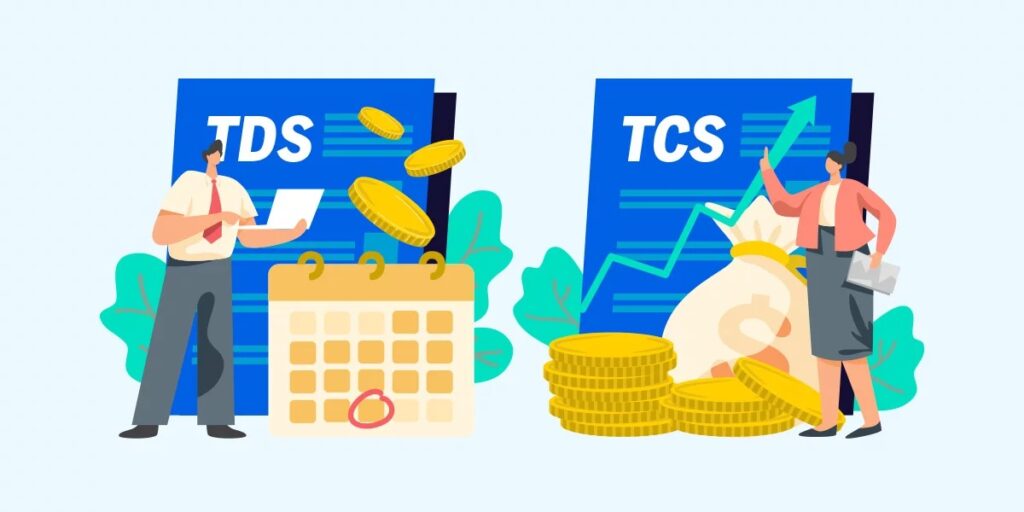
Understanding the Basics of India’s Tax Deduction and Collection System
What Is TDS?
TDS stands for Tax Deducted at Source.
Consider it this way: a tiny amount of every payment you receive is cut (deducted) and given to the government as tax before the remaining amount is given to you.
Typical TDS Examples:
Every month, your employer takes TDS out of your paycheck. TDS is withheld by a bank from interest earned on fixed deposits. When a business pays contractors or freelancers, TDS is subtracted.
The purpose of TDS is to ensure that taxes are collected ahead of time so that individuals do not neglect to pay them at the end of the year. Additionally, it spreads out your tax payments rather than paying them all at once.

What Is TCS?
TCS stands for Tax Collected at Source. This time, at the time of sale, the seller is the one collecting the buyer’s taxes. After that, the seller pays the tax to the government.
Typical TCS Examples:
Purchasing a high-end vehicle that costs more than ₹10 lakh? TCS is collected from you by the dealer.
Purchasing alcohol, coal, or scrap from a merchant? TCS is applicable.
Using LRS to send money overseas? The bank or travel agency may collect TCS.
Why TCS Exists: Similar to TDS, it guarantees that the government receives its fair share of taxes up front, particularly for expensive or high-value transactions.
Do You Need to Worry About TDS or TCS?
Check your salary slip or Form 16 to see if TDS has already been deducted if you are a salaried employee.
TCS may be applicable if you’re sending money overseas or making big purchases (such as jewelry, cars, or real estate).
The good news is that TDS and TCS are both adjustable; you can claim them when you file your income tax return and they appear on your Form 26AS. You may even be eligible for a refund if too much was collected.

